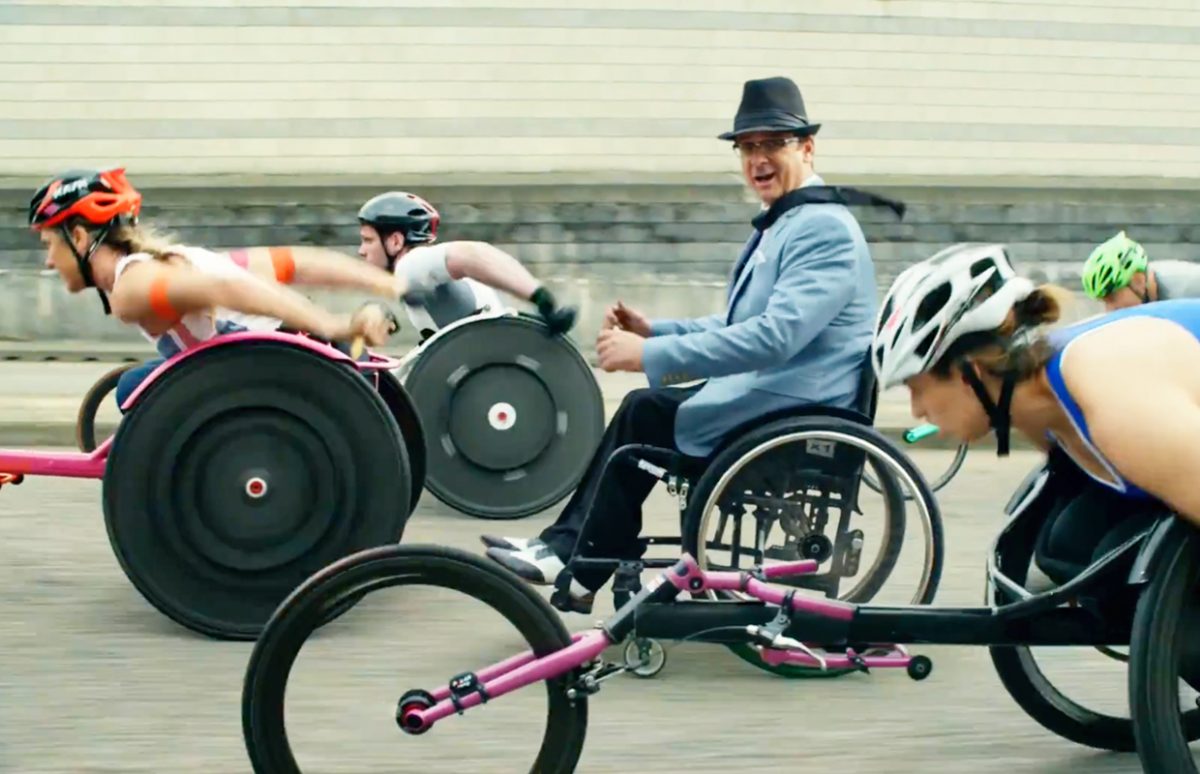Britain's commercial Channel 4 TV company revolutionised the televising of disability sports for the 2012 Games in London. It has continued its commitment to disability sport, proudly proclaiming on all its communication that it is the "Paralympic Broadcaster". This from the channel that brought us Big Brother and Big Fat Gypsy Wedding. For the 2016 Paralympics, a new trailer and advert competition are wonderfully discussable in class.
Channel 4's Paralympics magazine programme every night during the Games is called The Superhumans. When the channel released this trailer for the show in July, it received a massively positive public response with almost 6 million views on YouTube.
The infectious soundtrack hammers home a positive message – and a great grammar point!: "Yes I can!" It's ideal for class use, depending on level to:
- work on vocabulary for leisure activities (there aren't only sports).
- work on the present continuous. (They are dancing. He is playing the piano with his feet. )
- discuss disability sport.
- discuss how people with disabilities are, and should/could, be portrayed.
You could either start out by showing the video and ask for reactions or tell pupils they are going to see a video about the Paralympics/disability sports and ask them to imagine what it might contain. Then show the video and ask them whether it fit/opposed their hypotheses.
The Light Side
In conjunction with their Paralympic broadcasting, Channel 4 launched a competition for advertisers to come up with a an advert that prominently featured people with disabilities. The winning campaign was for chocolate company Mars, and their sweets Maltesers. There are three ads but this is probably the one you can most safely use in class (spoiler alert: it's about a dog swallowing a hearing aid and how the deaf person will get it back).
The ads are part of a campaign called "Look on the Light Side", which includes other ads looking at funny incidents in everyday life. Maltesers worked with a disability charity to come up with ads which neither made disabled people appear as victims nor as impossibly perfect role models.
This one features two deaf women speaking in sign language. One is telling the other about a mishap involving her boyfriend's dog and her hearing aid. The ad will air first without subtitles. That version is not available online, so you may want to hide the English subtitles at first. The actors and signs are very expressive, so pupils may be able to come up with hypotheses without the text.
After viewing (and once the laughter dies down), encourage pupils to discuss whether the same advert would work if it featured hearing actors (and a different object – an earring for example). Are they used to seeing disabled people featured in adverts?
You may want to show this "making of", where the advertisers, creative, actors and disability charity discuss the campaign. As Rosemary Frazer, campaigns manager for the Scope charity, points out, there are 12 million disabled people in the UK, about 20% of the population. Should they be more visible in the media? What about other population groups that are under-represented?
Copyright(s) :
Channel 4
> Paralympics Rio 2016
> The Department of Ability: No Ordinary Superhero Comic





